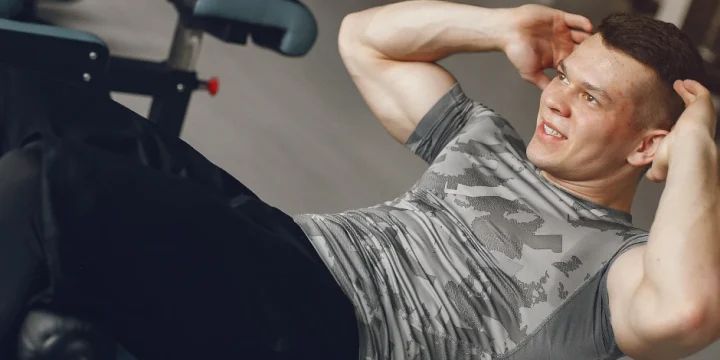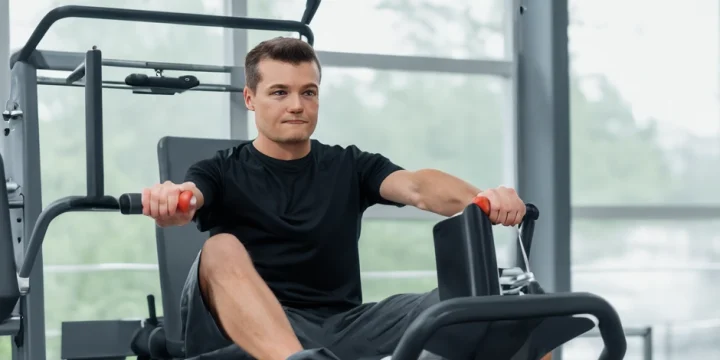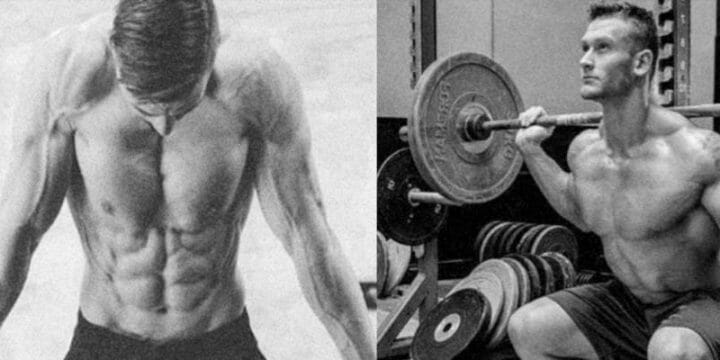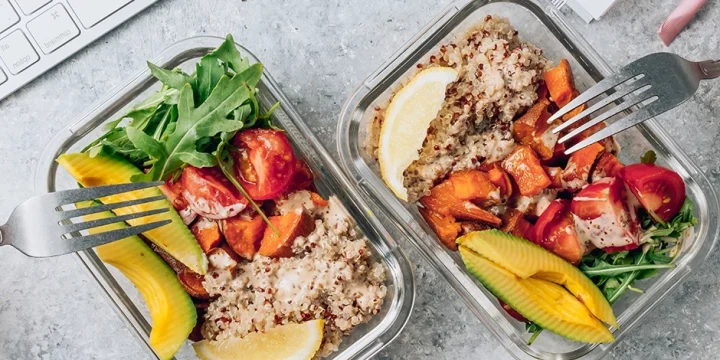Just because you’re unable to go to the gym for your regular workout session doesn’t mean you shouldn’t break a sweat every now and then.
Fortunately for you, there is a little thing called calisthenics exercises that can be performed pretty much anywhere, as long as there is adequate space to move around in. By utilizing some of the best bodyweight exercises and targeting a specific muscle group with each dip, squat, lunge, push-up, and more - build muscle and strength using just your body weight.
In this article, we have explained every nook and cranny behind some of the best calisthenics exercises out there so that you can hopefully start building muscle and strength faster than anticipated.
Here's a complete list of calisthenics exercises that will serve as a great addition to your workout plan.
Quick Summary
- Some of the best calisthenics exercises include bodyweight squats, burpees, plank, pistol squats, and chin-ups.
- Calisthenics exercises, utilizing body weight, offer a versatile workout option that can be performed virtually anywhere, targeting various muscle groups through exercises like squats, lunges, push-ups, and more.
- The study "The effects of a calisthenics training intervention on posture, strength, and body composition" concluded that there was a notable increase in participants' strength, as evidenced by a 16.4% improvement in the push-up test and a 39.2% increase in the pull-up test.
- In my opinion, the versatility and effectiveness of calisthenics truly set it apart. It's a valuable addition to any fitness routine, providing both strength and endurance benefits without the need for gym equipment.
Top 10 Calisthenics Exercises List
Ever heard of the human flag? Well, besides being able to hold yourself horizontally on a pole, below you will find a complete list of some of the best calisthenics exercises around. If you perform these movements correctly, you will be able to target each muscle group and give your entire body a great workout.
Try and challenge yourself by seeing which body exercises on this list can you perform and later decide how many exercises should you include in your workout.
And while Calisthenics is deemed one of the best bodyweight exercises, if you have a spare dumbbell, you could use one or two for additional resistance whenever possible.
Exercise #1: Bodyweight Squat
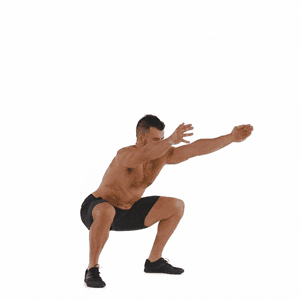
The bodyweight squat is one of the most popular and effective calisthenics exercises on this list.
It works your lower body including your quadriceps, hamstrings, glutes, and calves, as well as your abdominal muscles.
To perform a bodyweight squat, follow these steps:
- Start off by standing with your feet slightly wider than hip-width apart. Point your toes slightly outwards.
- Next, inhale and tighten your core to stabilize yourself, look forward with your chest sticking forward. Shift your weight back into your heels while pushing your hips behind yourself as your buttocks reach towards the floor.
- Aim to squat down until your thighs are almost parallel to the floor. Keep your feet flat on the ground throughout this calisthenics movement and to keep your knees over your toes.
- To return to the starting position, keep your chest sticking out, exhale, and then push yourself back up until you are standing upright.
Exercise #2: Pistol Squat
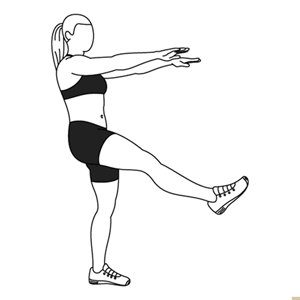
The pistol squat is a much more advanced version of the bodyweight squat. In fact, it may be one of the hardest skills to learn, which requires an enviable level of focus, vertical balance, and proper form.
Unsurprisingly, this calisthenics exercise will work your lower body, particularly your hips, hamstrings, quadriceps, glutes, and calves.
The reason this is one of the more advanced body exercises is that it balances any strength deficiencies as you are isolating each side, plus it can help improve your range of motion, general flexibility, and stability.
You can perform a pistol squat using the following steps:
- The first step is to stand with your feet together and parallel.
- You will then extend one leg in front of yourself, trying to keep it as straight as possible. As your leg raises a little bit off the floor, keep it in that hovering position. Your arms should also be raised straight out in front of you.
- Next, keep your core engaged with your back straight and bend your standing leg. Your body will lower as you extend your other extremity out in front of you.
- Continue to bend your standing leg as far as you can. The aim is to get your extended leg parallel to the floor.
- Once you have reached the appropriate depth, you should straighten your leg to return to the starting position. You should keep your extended leg straight until you reach the top, you can then switch legs and repeat the movement.
Calisthenics training is a feasible and effective training solution to improve posture, strength and body composition without the use of any major training equipment.
- Ewan Thomas, Movement Specialist Professor, Università degli Studi di Palermo
Exercise #3: Lunges
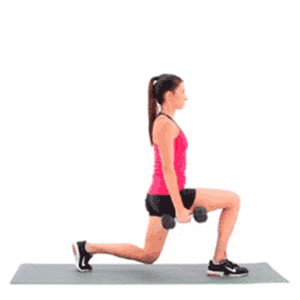
Lunges are a popular choice for calisthenics a.k.a. bodyweight exercises. They are primarily used for training your legs, particularly your quads and glutes.
It is also used for training your hamstring muscles and calves.
While performing this calisthenics movement, your abdominals and lower back muscle groups will act as stabilizers.
To perform a lunge, use the following steps:
- Start off by engaging your core with your feet hip-width apart.
- Simply take a big step forward with one of your legs, you should shift your weight forward so that your heel hits the floor first.
- After landing you will lower your body until your front leg is parallel to the floor, your shin should be vertical. If possible, try to avoid allowing your knee to move too far forward, and never past your toes.
- To move back to the start position press your weight into your front foot and drive back up to complete the repetition.
- Repeat this calisthenics movement with your other leg.
Related: Calisthenics vs weights
Exercise #4: Push-Ups
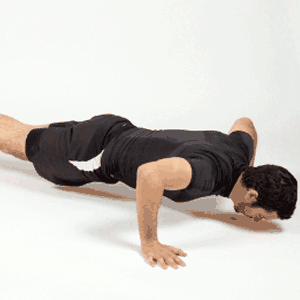
There are 100’s of push-up variations you can try, it is also one of the most popular calisthenics exercises, with each variation able to target different parts of your upper body.
Typically a push-up will target your chest muscles (pectorals), shoulders (deltoids), your triceps, and the abdominals.
To perform a regular press-up, follow these steps:
- Start off by getting on your knees and simply placing your hands wide enough to be slightly outside your shoulders.
- Next, extend your legs while keeping your arms outstretched to hold your upper body weight up. You are going to be moving into a “plank” position.
- At this stage, it is important that you engage your core and try to stay as straight as possible. You must not let your back muscles sag, or push your backside into the air.
- To perform the push-up, you will have to lower your body by bending your elbows close to your body. Your chest should almost touch the floor, with your arms at a 45-degree angle.
- While in the lowest position, have a pause before you propel yourself back up to the starting position.
Exercise #5: Pull-Ups/Chin-Ups
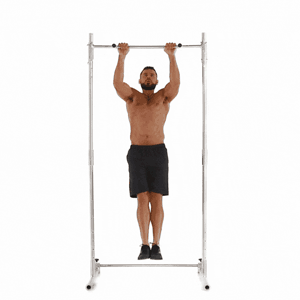
Calisthenics bicep exercises like pull-ups and chin-ups are a true test of upper body strength, and being able to knock out double figures of either is going to be nothing short of impressive.
The popular pull-up works your back muscles primarily, including your lats (latissimus dorsi), traps (trapezius), and delts (deltoids). They can also work your pecs and biceps depending on the variation you choose.
Chin-ups, on the other hand, are usually performed to build mass in your lats and biceps.
For pull-ups and chin-ups, you will need a securely mounted pull-up bar.
Use the following steps to perform pull-ups:
- Start off by standing facing a pull-up bar.
- Grab the bar with an overhand grip. Your arms should be slightly wider than shoulder-width apart.
- Next, using your shoulder and back muscles pull yourself up until your head is over the bar.
- Return to the starting position to complete one repetition.
For chin-ups, use the following steps:
- Again, start by facing the pull-up bar.
- This time you will be grabbing the bar with an underhand grip. Your arms will be slightly narrower than shoulder-width apart.
- You will be using your biceps and your lats to pull yourself up until your head is above the bar.
- Finally, to complete a repetition, slowly lower yourself back to the start position.
Related Articles:
Exercise #6: Burpees
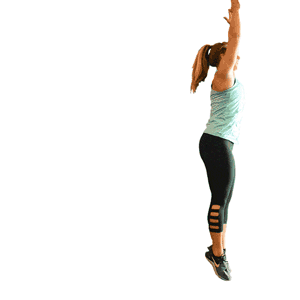
The burpee will train your entire body, while also giving you an intense cardio workout.
With every repetition performed, you will be working your arms, chest, legs, and abs. Just a few reps and you will be struggling, that I swear.
No wonder it is one of the most hated calisthenic exercises. It certainly does take skill but it is not impossible to learn.
To do a burpee, follow these steps:
- Stand with your feet shoulder-width apart, aim to keep your weight in your heels and your arms wide at the side.
- Start by pushing your hips back and bending your knees into a squat.
- You will then place your hand on the floor in front of you, preferably slightly narrower than your feet.
- Place your weight onto your hands and jump your feet back. Try to land softly onto the balls of your feet. Your back should be straight throughout this movement.
- You are then going to perform a push-up before jumping your feet forward so that they land next to your hands.
- To finish one repetition, you are going to then quickly jump up onto your feet. Some variations of the burpee will have you raising your hand above your head as you jump, while others will allow you to keep them at your side.
Exercise #7: Jump Squats
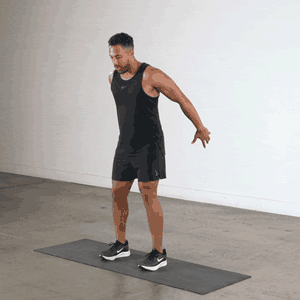
Jump squats are similar to the bodyweight squat, except you are adding a jump to the regular routine.
This added movement will work slightly different muscles, and will also help to improve your aerobic fitness.
If you are a complete beginner to calisthenics, you may want to start with a low jump.
And if this is easy for you, supplement your workout with some slam ball exercises.
Then as you become more experienced and fitter, you may want to move onto a more explosive jump.
To do a jump squat, follow the steps (1-3) laid out for the bodyweight squat shown above. Then add the following steps:
- Once you reach the stage of the squat where your legs are almost parallel to the floor, you will need to keep your core engaged while you explode forcefully as you jump up.
- As you land, aim to land softly midfoot, with your trunk aiming a little forward. You will then immediately lower into the squat position ready for another repetition.
- For this particular bodyweight exercise, each set should include 10-12 reps. Alternatively, you could perform as many as possible during a set time limit. For example, how many can you perform in 30 seconds?
Exercise #8: Plank
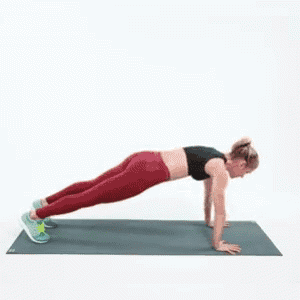
There are plenty of variations to the standard plank, each with varying degrees of difficulty.
Primarily, this calisthenics ab exercise will work your core, although some benefit will be felt in your upper back, your pectorals, and the serratus anterior (the muscle that wraps around the side of your chest and shoulders).
Exercise #9: Dips
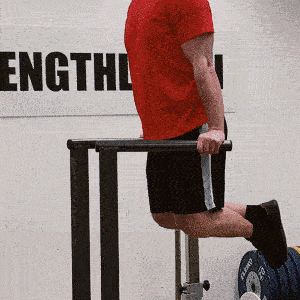
Doing dips is one of those body exercises where you are going to need a dip bar (these are sometimes referred to as parallel bars) or a dip station, although certain variations can be performed on a chair or sturdy box.
Dips will work your triceps primarily, although they can also work your deltoids, your pecs, and the rhomboid muscle group of your back.
To perform dips using a dip bar, follow these steps:
- Stand inside the dip bar and lift yourself off the ground using your arms and shoulders.
- Your elbows should be bent back so that you are using your triceps to move up and down.
Exercise #10: Mountain Climbers
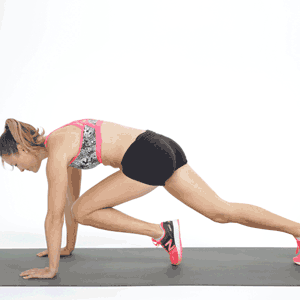
Mountain Climbers can be used when training for fitness rather than strength.
This particular calisthenics exercise will get your heart rate up quickly while also working your deltoids, biceps, triceps, chest, obliques, abdominals, quads, hamstrings, and hip abductors.
To do this calisthenics movement, follow these steps:
- Begin in a standard plank position, with your hands shoulder-width apart, arms straight, and your body forming a straight line from your head to your heels.
- Tighten your core muscles to keep your body stable and straight.
- Bring one knee towards your chest, keeping the rest of your body in the plank position.
- Quickly switch legs, extending the bent leg back to the plank position while simultaneously bringing the other knee to your chest.
- Continue alternating legs at a brisk pace. It should resemble a running or climbing motion.
- Breathe steadily throughout the exercise, inhaling and exhaling rhythmically.
Mastering Advanced Calisthenics Skills
While foundational exercises lay the groundwork for calisthenics, advancing to more complex movements can elevate your strength and skillset. Some of the coveted advanced calisthenics skills include:
- Planche: A challenging move where you hold your body parallel to the ground, supported only by your hands.
- Handstand Pushup: An inverted pushup where you push yourself up and down while maintaining a handstand position.
- Front Lever: Holding your body straight and horizontal to the ground while gripping a bar or rings.
- Back Lever: Similar to the front lever but with your face pointing upwards.
Mastering these skills not only showcases physical prowess but also demonstrates control, balance, and dedication. They can be the ultimate goals for those looking to push the boundaries of bodyweight training.
Starting with Calisthenics: A Guide for Home Beginners
Embarking on the calisthenics journey doesn't require a gym membership or fancy equipment. In fact, beginners can start right at home with minimal space. Here are some foundational exercises tailored for absolute beginners:
- Wall Push-Ups: Stand facing a wall and push yourself off it. This helps build basic push-up strength.
- Chair Dips: Using two chairs, perform tricep dips to strengthen your arms.
- Step-Ups: Using a sturdy platform or a step, perform step-ups to engage your legs.
Remember, the key is consistency. Starting with these basic exercises and gradually progressing will set you on the path to more advanced movements.
What Are The Benefits Of Calisthenics?
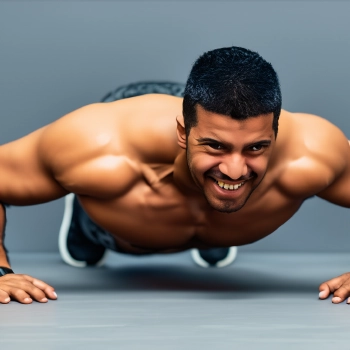
The benefits of calisthenics are improved flexibility, weight loss, fat loss, and increased endurance.
There are a number of health benefits you can experience while performing Calisthenics exercises, such as:
- An increase in muscle mass and tone. To build muscles, you will need to provide it with progressive resistance [1]. While you may only be able to go so far with bodyweight alone (sorry bodybuilders), but for beginners, you should be able to experience moderate muscle growth with certain calisthenics exercises because they're considered as one of the best testosterone boosting exercises.
- Improved flexibility. As you get stronger, you will likely become more flexible in the process, too [2].
- Weight loss and fat loss. This can occur in two ways. Firstly, as you work out, your resting metabolic rate may increase [3]. Secondly, any form of resistance training will cause your metabolism to stay raised long after the conclusion of the workout [4].
- Increased endurance. A Calisthenics workout will involve performing multiple repetitions of the same exercise, without rest, until you are fatigued. As you recover from these workouts your strength will increase, you will experience muscle growth, and your overall fitness levels and endurance will improve too [5].
Supercharge your training by pairing it with a workout diet plan to build muscle.
References:
- https://www.ncbi.nlm.nih.gov/pmc/articles/PMC5684326/
- https://pubmed.ncbi.nlm.nih.gov/25858653/
- https://www.ncbi.nlm.nih.gov/pmc/articles/PMC3661116/
- http://www.unm.edu/~lkravitz/Article%20folder/epocarticle.html
- https://www.ncbi.nlm.nih.gov/pubmed/4033406
About The Author
You May Also Like

